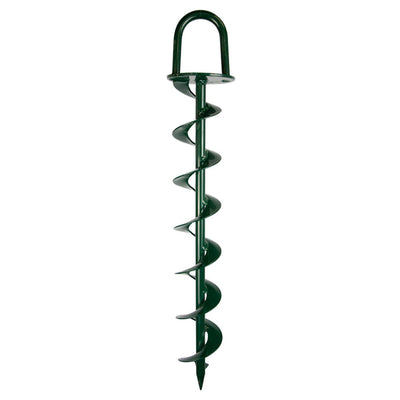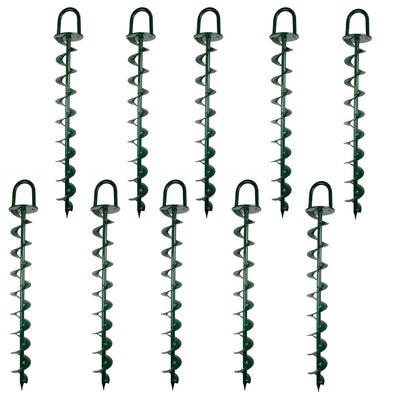Understand Why Ground Support Is Very Important for Safety and Resilience
Ground anchors are an essential element in building and construction, offering critical assistance and security for different frameworks. Their ability to transfer tons efficiently to the ground not just enhances structural honesty however also plays a significant role in mitigating threats connected with ecological elements, such as unpredictable soil and seismic task. Comprehending the various types and applications of ground anchors can brighten their important function in guaranteeing safety and sturdiness. The ins and outs of their installation and the benefits they offer may not be immediately obvious, triggering more exploration into this vital topic.
Role of Ground Supports in Construction
Ground anchors play a pivotal duty in construction by offering vital assistance and security to frameworks. These tools are made to move loads from a framework to the ground, ensuring that buildings and various other frameworks stay protected under different problems. Ground anchors are specifically essential in circumstances where soil conditions are unstable or where there is a risk of lateral activity, such as on slopes or near bodies of water.
The installation of ground supports entails boring into the planet to reach steady soil or bedrock, where the supports can be safely secured. This process not just enhances the structural honesty of a project however additionally reduces the risks connected with dirt disintegration and shifting. Furthermore, ground supports can be used in short-term structures, such as construction websites, where they offer necessary stablizing throughout the building process.
Ground anchors likewise add to the long life and toughness of frameworks by lowering the chance of settlement and failure. Ground Anchor. By properly distributing and managing loads, these crucial components are essential in preserving safety criteria and making certain the dependability of various building jobs. Overall, the importance of ground supports in building and construction can not be overemphasized, as they are indispensable to effective engineering methods
Kinds Of Ground Anchors


While numerous sorts of ground anchors exist, each offers certain applications and conditions within construction tasks. One of the most typical types consist of mechanical anchors, grouted anchors, and driven anchors.
Mechanical anchors, such as development anchors, utilize a mechanical action to safeguard the anchor within the substrate - Ground Anchor. These are typically utilized in lightweight applications, like securing components to masonry or concrete
Grouted anchors, on the various other hand, entail drilling a hole, placing a steel rod or wire, and then filling up the annular area with grout. This method appropriates for high-load circumstances, supplying enhanced stability and resistance to vibrant pressures commonly discovered in hefty construction.
Driven supports are usually mounted by driving a steel rod or pipeline right into the ground, making them suitable for short-lived applications such as safeguarding scaffolding or formwork. They fast to set up and can be removed conveniently when no more required.
Various other specialized anchoring systems include helical anchors, which are screw-like tools used in various dirt conditions, and deadman anchors, which count on the weight of a buried things to offer stability. Each kind of ground support is designed to satisfy certain engineering demands, guaranteeing safety and security and architectural stability.
Benefits of Using Ground Anchors
The advantages of using ground supports in building and construction projects are considerable, enhancing both safety and architectural efficiency. Ground supports offer important resistance versus side forces, such as soil motion, wind tons, and seismic activity. This resistance helps maintain the stability of structures, avoiding possible failings that can bring about hazardous scenarios or expensive fixings.
In addition, ground anchors help with the effective transfer of lots from structures to the surrounding soil, guaranteeing a well balanced circulation of weight. This tons transfer minimizes the risk of shifting or clearing up, which can jeopardize the integrity of a structure with time. By using ground anchors, engineers can additionally create much more effective designs, as they allow for slimmer architectural elements while preserving security requirements.
In addition, ground anchors are functional and adaptable to numerous soil conditions and task demands. Their installation can typically be finished quickly and with very little disturbance to the surrounding atmosphere, making them an efficient option for several building applications. Eventually, using ground anchors boosts not only the image source toughness of frameworks but also adds to a more secure working environment for construction workers and future occupants.
Usual Applications and Makes Use Of
Numerous building and construction jobs leverage ground supports for their effectiveness in boosting stability and security. These versatile components are typically employed in various applications throughout the construction and civil engineering fields. One widespread application remains in maintaining walls, where ground supports offer the needed support to avoid soil movement and keep architectural integrity.
Furthermore, ground supports are crucial in safeguarding momentary frameworks, such as scaffolding and shoring systems, ensuring they remain steady throughout construction tasks. In the realm of foundation support, they are utilized to enhance existing structures, particularly in locations susceptible to ground settlement or shifting soil conditions.
Ground anchors also locate comprehensive usage in slope stabilization projects, where they assist alleviate landslide risks by securing the soil to steady rock developments. An additional substantial application is in the setup of wind generators, where they safeguard the base versus side pressures produced by wind, making sure operational safety and longevity.
In addition, ground supports are utilized in tunneling projects to maintain the bordering ground during excavation. Their diverse applications underscore the essential duty ground anchors play in keeping security and resilience in different construction scenarios.
Setup Best Practices
Effective application of ground supports in various building projects depends upon effective setup techniques. Appropriate setup is crucial to make sure the anchors meet their desired purpose and maintain structural honesty with time. Trick best techniques consist of thorough website assessment, which includes examining dirt conditions, tons requirements, and environmental factors that might affect anchor efficiency.
Prior to setup, it is necessary to select the appropriate sort of ground anchor based upon the particular application my review here and dirt features. Using top quality products and sticking to supplier requirements will boost the anchor's resilience and effectiveness. Throughout installation, guarantee that the anchor is placed at the appropriate angle and depth, as these factors significantly affect load-bearing capacity.
Routine evaluations are also advised to keep an eye on the problem of the supports and surrounding soil. By adhering to these setup ideal methods, contractors and engineers can improve the official statement safety and durability of frameworks reliant on ground anchors.

Final Thought
In summary, ground supports are vital elements in building and construction, considerably boosting safety and security and toughness. The varied types and benefits of ground supports, coupled with their varied applications, emphasize their value in both irreversible and short-lived frameworks.
The setup of ground anchors includes exploration right into the planet to reach secure soil or bedrock, where the supports can be securely anchored.The advantages of making use of ground supports in building projects are substantial, boosting both safety and security and architectural efficiency.Countless building projects leverage ground anchors for their effectiveness in enhancing security and safety.Effective application of ground anchors in various building and construction jobs hinges on efficient installation techniques.In summary, ground anchors are important components in construction, considerably enhancing safety and security and toughness.